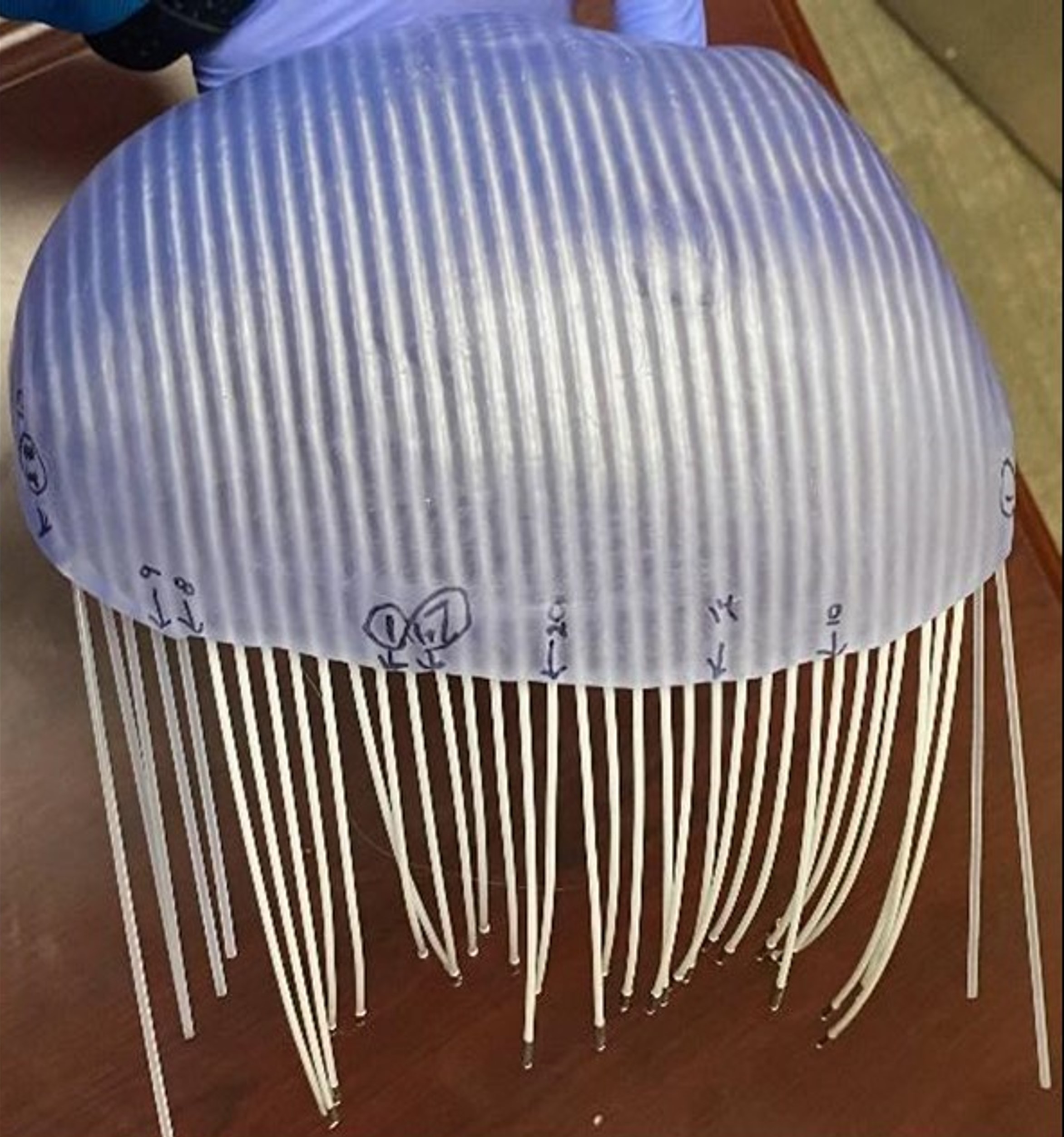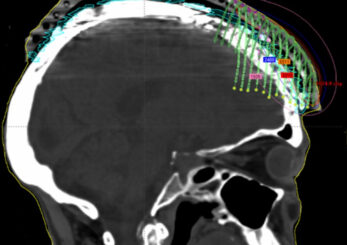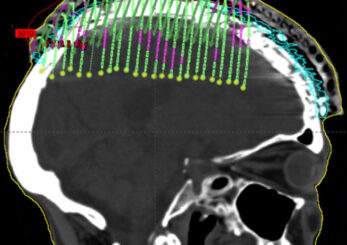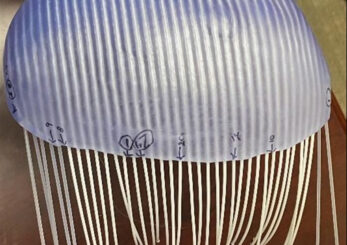
Case Report On Novel 3D-Printed Surface Brachytherapy Applicator For The Scalp In A Rural Setting
Northern Arizona ABS Poster
“Our initial experience with this 3D printed applicator for the scalp was positive and believed to be superior to more traditional applicators”
Patient History
90-year-old female with multiple SCC lesions on the forehead and scalp
Why Adaptiiv?
- Superior fit and patient comfort
- Easy automated applicator design
Design & Fabrication
A 1 cm bolus was created and an applicator was designed in Adaptiiv 3D Bolus software. The applicator was printed in clear resin using SLA printing technology, available through the Adaptiiv On Demand service.
Clinical & Operational Benefits
- Excellent fit for every fraction with no air gaps
- Minimal tunnel design time through automation
- Catheters remained stable and equidistant from each other
- Set up easily reproduced daily

Figure 1. (A), (B), display the 3D-printed BT applicator on the scalp during the second CT Sim. Anterior and posterior coverage was provided by the applicator for scalp lesions.

Figure 1. (A), (B), display the 3D-printed BT applicator on the scalp during the second CT Sim. Anterior and posterior coverage was provided by the applicator for scalp lesions.

Figure 1. (C) shows the SLA 3D-printed applicator with catheters in place.